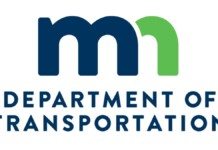By Charles Pekow — No more TIGER and Capital Investment Grants? These programs from the U.S. Department of Transportation would be eliminated under the FY 18 federal budget proposed by President Donald Trump. They have been used around the country to finance bicycle projects.
About $500 million a year in Transportation Investment Generating Economic Recovery (TIGER) grants go to communities. Pittsburgh, for instance, is using TIGER money for to build a bikesharing station; and Brownsville, TX is using it to build a 2.4-mile bike/ped causeway.
If Trump’s budget goes though, it would not affect TIGER programs already underway. The Utah Transit Authority’s (UTA) $20 million grant, obtained last year, would not be affected. UTA is using the grant along with matching funds, for a variety of projects to improve access to public transit for bicyclists and pedestrians.
The $2.4 billion Capital Investment program specifically allows bicycle projects.
As of late March, the administration had not released all its budget plans for next year. But the main sources of federal funds for bicycle projects, Transportation Alternatives and the Recreational Trails Program, are probably safe this year because they get dedicated funding from fuel taxes. It’s not clear what will become of the Congestion Mitigation & Air Quality grant program. And Congress will need to approve any cuts. If Congress eliminates any of the programs, existing grantees could complete the ones already underway.
Trump’s budget also proposes to end the $3 billion Community Development Block Grant (CDBG), which has operated since 1974, giving grants to state and local governments to provide economic boosts for blighted areas and low-income people. Some communities have used them to build bicycle paths, despite the fact that in 1985, HUD determined that it “has not recognized bike paths as meeting the criteria (for CDBG use) because communities have not been able to show that they are unable to finance bike paths on their own, as other sources of funds are available for it” (https://files.hudexchange.info/resources/documents/CDBG-Memorandum-Using-CDBG-Funds-to-Create-a-Bike-Path.pdf).
But Portsmouth, VA, for instance, reported it had used CDBG funds to build 6.3 miles of bicycle facilities. The city also reported that it used CDBG money for improvements that help cyclists, such as pedestrian signals and sidewalk curb cuts to comply with the Americans with Disabilities Act (https://www.hrtpo.org/uploads/docs/TTAC11062013/P16-Portsmouth_Bicycle_and_Pedestrian_Plan.pdf).











